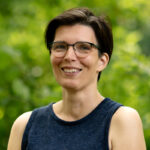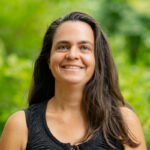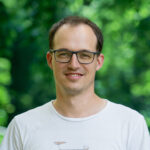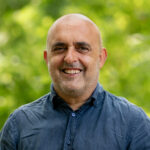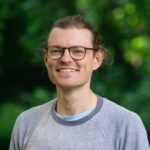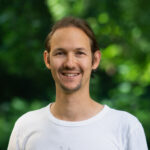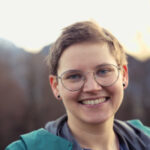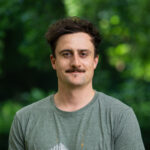Head of laboratory
Univ.Prof. Dr. Thomas Hein
Mag. Dr.
Elisabeth Bondar-Kunze
Mag. Dr. Andrea Funk
Priv.-Doz. Mag. Dr.phil.
Gertrud Haidvogl
Dipl.-Ing. Dr.nat.techn.
Severin Hohensinner
Dr. Paul Meulenbroek MSc.
Dipl.-Ing. Dr.nat.techn.
Günther Unfer
Dr. Olena Bilous
Phd Students
To migrate or to stay?
Quantifying the unseen – an assessment of the bottom fish fauna in the Austrian Danube.
This PhD-thesis aims to assess the influence of habitat quality, lateral connectivity and seasonal effects on the distribution and composition of the bottom fauna in the fragmented meta-ecosystem of the Austrian Danube.
Impacts of connectivity changes on river meta-ecosystems
Who, when, where and how many? – Water level-dependent and seasonal habitat use of the near shore fish fauna in the Austrian Danube.
This PhD-thesis aims to assess water level-dependent and seasonal use of freshwater habitats and the composition of the near shore fish fauna in the fragmented meta-ecosystem of the Austrian Danube.
Who eats whom? – Food web analyses on shoreline areas of the Austrian Danube.
the distribution of brown and green food webs and the effects on
juvenile fish in shoreline habitats of the Austrian Danube is
investigated.
Recreational fishing in the meta-ecosystem Danube – A socio-ecological approach for sustainable future management
Whithin this PhD-thesis past and present fishery management strategies will be analyzed. Together with a comprehensive survey conducted among the angling community this will form the basis for waterbody and species specific management recommendations.
Implications of Management actions on Ecosystem services and socio ecohydrology of restored river sections using Networks.
Master Students
Sarah Gross: Development of the lateral connectivity of the Austrian Danube from 1817 – 2022 and its impact on habitat availability for five selected fish species (Working title)
Jacob Becker: Evaluating the potential for cultural ecosystem services of the Danube in eastern Austria using the ResCulES method
Lukas Sölkner: Influence of isolation by distance and hydropower plants on genetic differentiation of migratory fish populations – Case study Chondrostoma nasus in the Danube catchment
Emily Perle: Riparian habitats along the Austrian Danube – What is really left?
Praise Ainomugisha: Calculation of ecosystem services with indicator-based approaches (IDES, RESI,…) and their adaptation for the Austrian Danube.
Anna Pold: Impact of ship-induced waves on the distribution and nutritional value of periphyton in the Austrian Danube.
Johannes Kührer: Impact of ship-induced waves on functional feeding groups of benthic invertebrates and the distribution of green and brown food webs in the Austrian Danube.
Moritz Benz: Analysing fish migration in the lower Traisen using UAV and PIT data.
Bachelor Students
Marie-Theresa Wieczorek: Flussmorphologische Entwicklung der Traisen im Projektgebiet LIFE+ Traisen zwischen 2016 und 2022. Flächige Analysen.
Julian Jöbstl: Flussmorphologische Entwicklung der Traisen im Projektgebiet LIFE+ Traisen zwischen 2016 und 2022. Wassertiefen und Fließgeschwindigkeiten.
Johannes Schützenhofer, Massimiliano Grisorio: The construction of barriers and fish migration aids in the Austrian Danube system: an assessment over time.
Leonie Johanna Mayr: Analysis of fish tags at a cormorant roosting site in the Danube floodplains in Lower Austria.
Technical and scientific assistance
Dipl.-Ing. Dr. nat. techn. Stefan Auer
Dr. nat. techn. Martin Tschikof
Internships
Tobias Leister: Work package 3
Rebecca Tibbetts: Work package 3
Tom Warisse: Work package 3
Guilhem Ortega: Work package 3
Scientific co-operation partner BOKU
Andrea Watzinger & Harald Meimberg
Former team members
Dr. Damiano Baldan
Christian Doppler Research Association
The Christian Doppler Research Association promotes the cooperation between science and business. Specifically, this takes place in specially established research units with fixed terms, in which application-orientated basic research is pursued: Christian Doppler Laboratories at universities and non-university research institutions, Josef Ressel Centres at universities of applied sciences.
Under the direction of highly qualified scientists, research groups work in close contact with the commercial partners on innovative responses to business-related research issues.


